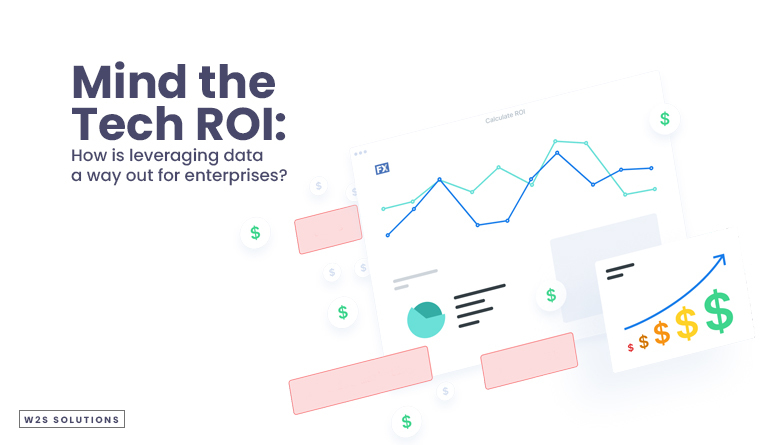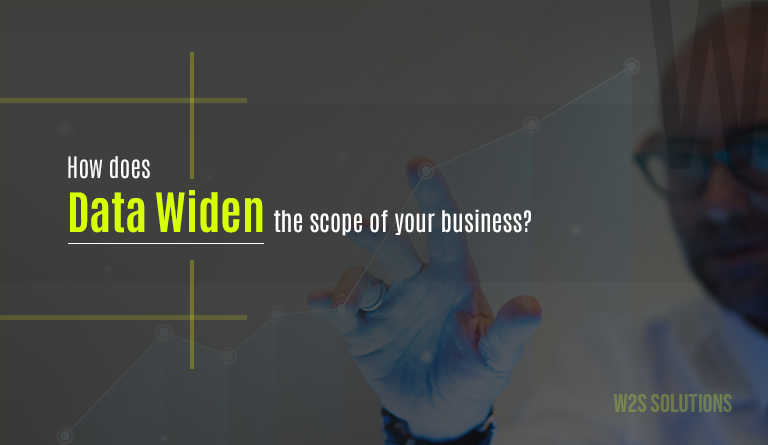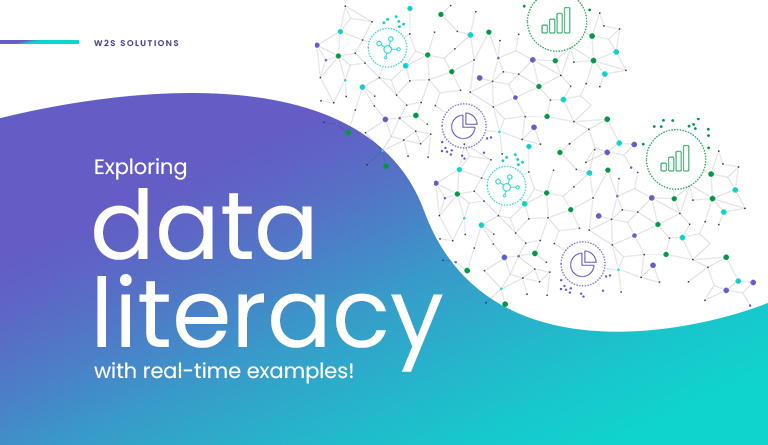In today’s data driven world, delivering a benchmark customer experience (CX) is essential for businesses to thrive. Personalization tailored to individual customer preferences, is a key driver in creating these exceptional experiences. However, collecting and managing customer data effectively can be challenging. This is where zero-party data comes into play.
Traditional methods of collecting data can be cumberstone and time-consuming. Today, brands can leverage Zero-party data to gather valuable insights directly from their customers. This approach offers a more efficient and effective way to understand customer preferences and behaviors. For example, Language learning app duolingo leverages zero-party data to personalize learning paths based on users preferences and goals. Similarly athletic apparel brand Nike collects Zero-party data through its Nike+ app to offer personalized training plans and product recommendations.
By adopting Zero-party data strategies, businesses can build stronger connections with their customers, provide personalized experiences, enhance customer satisfaction, boost loyalty, and make better data-driven decisions. Ultimately, Zero-party data enables companies to create an engaging customer experience, helping them stand out with long-term success.
So, What is Zero-Party Data?
Zero-party data is typically unstructured information that is voluntarily and proactively shared by end users. This information can be derived from the users through social media posts, surveys, customer reviews, and preference settings. It can be in multiple forms such as text, video, and images.
Compared to first-party data, which is collected through interactions with a brand’s website or app, zero-party data provides a more direct and in-depth understanding of customer preferences and behaviors.
It transforms how brands collect data and other crucial information from their users, enabling brands to devise unique business strategies that resonate with their audience on a personal level.
The Evolution of Consumer Data Strategies:
Usually, brands rely heavily on third-party data to gain insights into their customer behavior. With the increasing concerns over privacy violations and the tightening of regulations like the General Data Protection Regulations (GDPR) and the the California Privacy Act (CCPA), brands were forced to reconsider the data collection processes. Third-party cookies, which track users across websites, have now been phased out by major browsers like Google Chrome, Safari, etc.
So, companies have turned to first-party data, which is collected directly from consumers through their interactions with the brand. While first-party data provides valuable insights, it often fails in the depth required for hyper-personalization. This is where Zero-party data comes into play, offering more specific and actionable insights directly from consumers.
Business strategies built on this foundation of reliable data bedrock are more likely to be effective than conventional methods. Brands will have the opportunity to truly understand who their customers are- how they think, how they behave, etc. This mutual ground between the brand and its customers is also where innovation happens, a chance to deliver differentiated value among the sea of sameness.
Also, with Zero-party data, the customer can choose what information they want to share and how much of it. As brands leverage a transparent data collection framework, it ultimately increases the trust between the brand and its customers.This also has the potential to increase the likelihood of customers sharing insightful information.
Why Zero-Party Data is a Game Changer?
Enhanced Personalization: Since Zero-party data is shared willingly, it tends to be more accurate and specific. This allows brands to create hyper-personalized experiences, improving customer satisfaction and increasing loyalty. For instance, if a customer shares their size preferences or favorite product categories, the brand can curate a shopping experience tailored specifically to them.
Building Trust: In an age where data breaches and privacy concerns dominate headlines, consumers are more cautious about how their data is used. By adopting Zero-party data strategies, brands can build transparent relationships with their customers, demonstrating that they respect privacy and only use data with explicit consent. This builds trust and encourages long-term relationships.
Improved Data Accuracy: Unlike third-party data, which often relies on assumptions and inference, Zero-party data comes directly from the source. This minimizes errors and ensures that the data is both reliable and relevant, leading to more effective marketing and customer engagement strategies.
Compliance with Privacy Regulations: Zero-party data aligns with the increasing number of privacy regulations worldwide. Since the data is willingly shared by consumers, it dodges many of the legal issues associated with passive tracking or third-party data collection.
Key Steps to Embrace Zero-Party Data
The transition to a Zero-party data model requires more than just a change in data collection practices. It involves a complete shift in how brands view their relationships with consumers. At the heart of this transformation is transparency and value exchange. Consumers are no longer willing to share their data without a clear benefit in return. Brands must, therefore, offer tangible value in exchange for the information they receive.
The following steps provide a blueprint for business to effectively leverage Zero-party data:
Create a Clear Value Proposition: Consumers need to understand what they will gain from sharing their data. Whether it is personalized product recommendations, exclusive discounts, or early access to new products, the value exchange must be clear and compelling.
Educate Consumers on Data Usage: Transparency is critical in building trust. Brands need to clearly communicate how they will use the data and what measures they are taking to protect it. Providing easily accessible privacy policies and ensuring compliance with regulations is essential in this process.
Incentivize Data Sharing: Offering incentives can encourage consumers to share valuable information. This could be in the form of loyalty programs, personalized discounts, or unique shopping experiences.
Leverage Technology for Seamless Experiences: Brands need to invest in technologies that enable seamless data collection and analysis. Technologies like AI and machine learning can help process this data to deliver personalized experiences in real time.
Foster an Ongoing Dialogue: Zero-party data collection is not a one-time event. It requires ongoing engagement with consumers to continuously gather insights that reflect their changing preferences and needs.
The Role of Technology in Zero-party Data
Technology plays a major role in enabling companies to collect, manage, and utilize Zero-party data effectively. Innovations in customer data platforms (CDPs) allow brands to get data from various sources and gain an understanding of each customer. These platforms enable real-time processing of data, ensuring that personalized experiences are delivered promptly.
AI driven analytics further enhances the value of Zero-party data by identifying the trends. Machine learning algorithms can predict customer behavior based on shared data, helping brands understand the needs of their customers and provide even more tailored experiences. By implementing these technologies, brands can ensure that they are not only collecting Zero-party data but also using it to the fullest.
3 Main Challenges
- Even though Zero-party data offers numerous benefits, its adoption is practically difficult. The Primary challenge is gaining the customer’s trust. Many customers feel unsafe sharing their personal information, as there is a rise in data breaches and misuse. Brands need to work hard by providing customers a demonstration of a genuine commitment to privacy and transparency.
- The next challenge is the integration of Zero-party data with the existing systems. Many companies have invested heavily in first and third party data strategies, and transitioning to a Zero-party model may require significant changes in the infrastructure and processes.
- Finally, Zero-party data requires a long-term approach. Building trust and gathering data takes time, and brands need to be patient as they develop these new customer relationships.
How ZPD Creates (adjective) Value Across Industries in the age of AI
AI plays a major role in using Zero-party data to develop personalized customer experiences. By analyzing this data AI allows businesses to predict customer behavior and deliver the right message or product at the correct time. From customer service and sales to supply chain management and marketing, the impact of AI on customer experience is wide-reaching and undeniable.
Customer Service:
AI has enhanced customer service through chatbots and virtual assistants. They provide real-time support to customers all the time. When combined with Zero-party data, AI can offer personalized assistance based on the customer’s previous interactions and preferences. For example, if a customer frequently buys specific products, an AI chatbot can recommend similar items, making the shopping experience more tailored and efficient. This not only improves customer satisfaction but also saves time for both the customer and the company.
Sales Operations:
Sales teams benefit from AI by receiving valuable insights that help them understand what products or services will most likely interest a particular customer. AI can analyze Zero-party data to suggest personalized pitches or product recommendations, increasing the chances of making a sale. By tailoring their approach based on individual customer preferences, sales teams can foster stronger relationships with customers, leading to higher conversion rates and greater customer satisfaction.
Supply Chain Management:
AI is also making a significant impact on supply chain management by helping companies predict future customer demands more accurately. By analyzing patterns in customer preferences and Zero-party data, AI can forecast trends and allow businesses to adjust their inventory levels accordingly. This not only reduces waste but also ensures that customers receive their desired products on time. The result is a more efficient supply chain and a better overall customer experience.
Marketing Automation:
In marketing AI and Zero party data work together to create highly personalized campaigns. For example, a brand might use Zero-party data collected through a quiz to send personalized emails that reflect a customer’s style preferences. AI ensures that these marketing messages are sent at the right time, increasing the likelihood that the customer will engage with the brand. By delivering relevant offers and content, AI-driven marketing automation boosts engagement rates and improves customer retention.
Product Development:
AI’s ability to analyze Zero-party data allows businesses to develop products that better meet customer needs by identifying trends and pain points. AI can help companies predict what features or products customers are likely to want in the future. This gives businesses a competitive edge by allowing them to involve faster and stay ahead of market demands. Moreover, AI can assist interesting new products in virtual environments, reducing the time and costs associated with traditional product development processes.
Human Resources:
AI is also revolutionizing internal processes, particularly in human resources (HR). By analyzing employee feedback and data, AI can help HR teams create personalized programs that cater to the specific needs of employees. This can include tailored training sessions, personalized benefit packages, or career development plans, which can lead to higher job satisfaction and improved employee retention. Zero-party data collected from employees allows HR departments to better understand the workforce and make informed decisions about employee engagement strategies.
How W2S Solutions can Help you Leverage ZPD?
Industry leaders emphasize the importance of Zero-party data in building customer-centric strategies. As businesses continue to invest in AI and data-driven technologies, those that prioritize personalization while respecting customer privacy will thrive in this new era of customer experience. By leveraging these tools effectively, companies can build deeper connections with their customers, setting the stage for long-term success.
W2S Solutions is one of the leading Data Engineering companies, offering services for nearly two decades. We have partnered with top-tier brands across various geographies to develop impactful strategies that puts them ahead of their competitors. You can reach out to our data engineering team to know how we can unlock growth and value for your business.








